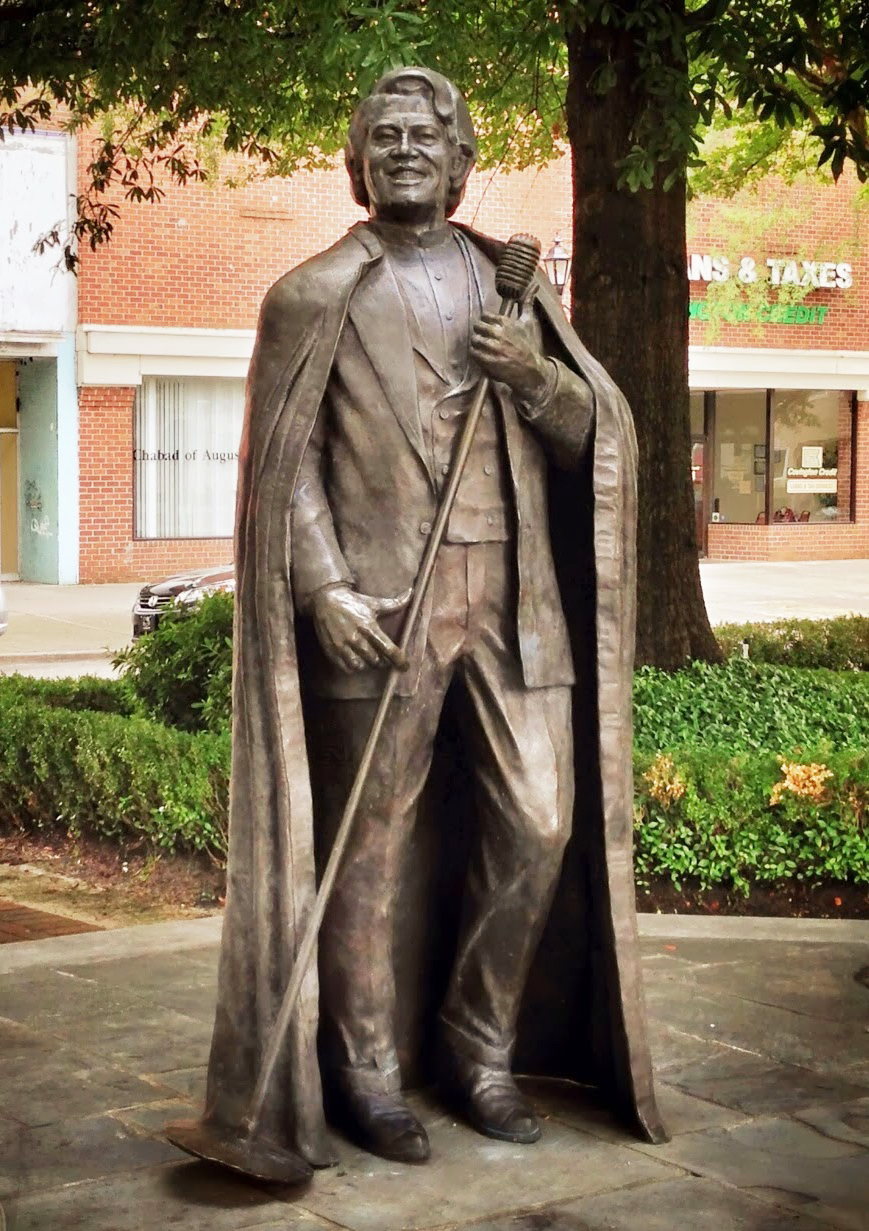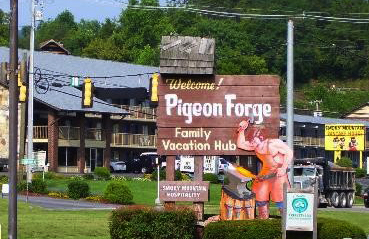Today, places pay close attention to their branding in order to attract different target audiences that could build the destinations’ identities as well as their economies. Whether strategic, meaning carefully and intentionally developed, or organic, that is, accidental but natural, place branding plays a vital role in developing the image of a destination in the minds of consumers.
Relying on attractions for economic viability can be risky. If and when the attraction is no longer there, will tourists still travel to the location? The answer to that question is ‘yes’ if the location manages to build an identity around the attraction strong enough to outlast the attraction. Places without striking landscape or significant theme parks can market themselves around a person to develop an identity beyond their borders.
Any figure with fame can be used as a marketing tool. Consider how often celebrities are used in advertisements to promote products. Because they are looked up to, celebrities act as opinion leaders and role models. The same could be applied to people-based place branding: the use of famous musicians to market places with which they may be directly or tangentially connected. Musicians are obvious strategic tools to brand a place because music has such an impact on a place’s culture.
Many places are already known for music-related accomplishments or attractions. For example, New Orleans is known not just for one musician, but rather for the entire jazz genre that defines the identity of the city. Additionally, music is an industry that can bring thousands of dollars in revenue to places through concerts and album production and sales, creating jobs and contributing to the health of their economy. By capitalizing on the presence of a notable musician, the place can incorporate the musician as part of the culture, maximize the potential revenue of the local music industry, and build an identity for itself with real equity.
Three cities in the southeast of the United States bear witness to the role of music in placemaking. Each of the cities--Augusta, Pigeon Forge and Memphis--have been tourists attractions for varying lengths of time.
City on the Savannah
Augusta is home to 200,000 people and struggles with high crime rates. A thriving arts scene, supplemented by the foundations created by famous Augustans like Jessye Norman and James Brown, is now bringing more national attention to this location. James Brown, also known as the “Godfather of Soul,” spent his childhood in Augusta before his stardom as a funk and R&B musician in 1956. Having started in an R&B group that opened for artists like B.B. King and Ray Charles, Brown’s initial audiences were primarily low-income young African American adults, reflected in the city’s 51% African American population and median income under $35,000.

In addition to these attractions, Augusta holds a few events in the icon’s honor, including the James Brown Music Festival, which appears to take little priority in Augusta, sporting a single-page website year round. The event was even scaled down in 2006 after citizens showed little interest.
Augusta brings in over 1.5 million tourists each year, earning about $439.82 million in direct visitor spending according to its tourism report. Notwithstanding James Brown’s international stardom, unfortunately, most of that income is not generated by James Brown attractions. Instead, it is the Master’s Golf Tournament every April that generates a $115 million impact on the local economy alone, which is then supplemented by other garden attractions that have earned Augusta its nickname as the Garden City of the South. Only about $44 million is being spent on other entertainment.
Not surprisingly, the target audience for tourism of the city reflects fans of the Masters rather than fans of James Brown. Augusta’s primary visitor profile outlined in its 2013 tourism report describes affluent professionals over the age of 55 earning over $100,000 annually looking for a destination to unwind. The report also reveals that Augusta visitors all come from a 300-mile radius of the city, again, not reflective of Brown’s international status.
Overall, by numbers, the tourism industry in Augusta does not even suggest that it is the home of such an influential icon. Augusta pays homage to its native son, but puts no money and promotional efforts into the connection. The intentional brand of Augusta is based only on the target audience of the most promising attractions. Despite this, Augusta still thrives as the home of James Brown, if not by income, by reputation. The subtle acknowledgements of James Brown can’t compare to the other attractions the city generates income from, yet globally, Augusta is better recognized as the home of James Brown than as Garden City, especially among the icon’s fans. The city of Augusta need not strategically brand based on the icon, for the income comes from elsewhere, and the organic brand already thrives without the city bureau’s assistance.

Pigeon Forge, Tennessee, is a mountainous city in the eastern portion of the state with a very small population of about 6,000 citizens. The city has a majority female population, with a high median age of 45 years old and a substantial white majority of 76.8%. The once quiet Appalachian community is now primarily a tourist destination, a change that came about in the early 20th century after the Great Smoky Mountain National Park’s establishment brought about the building of new roads and bridges and an influx of visitors.
The area prides itself on its thriving bluegrass and country roots. More significantly, Pigeon Forge is the childhood home of country singer Dolly Parton, who has since invested much of her estate back into the city and surrounding areas, which is why many of the attractions bear the musician’s name.
Dolly Parton was born to a large family in eastern Tennessee and began her career in music in her childhood, learning gospel songs and playing guitar for audiences by the age of 10. Her humble beginnings soon turned into an empire in 1986 after she opened her own theme park called Dollywood in Pigeon Forge, followed by Dolly Parton’s Dixie Stampede and Dollywood’s Splash Country. Now 70 years old, Dolly Parton is still expanding her empire. Fittingly, Pigeon Forge holds an annual Dolly Parade to act as a yearly homecoming for the icon.
Dolly Parton’s attractions in Pigeon Forge are all family-oriented, as are most of the attractions in the city, but the target audience for the tourism bureau’s outreach is noticeably similar to the target listeners of Parton’s music. Pigeon Forge visitors are over 60% female, with 64% being over the age of 50, most coming from rural towns. Similarly, recent studies have discovered that 52% of country music listeners are over the age of 45, also with a white and female majority. The average income of today’s country music listener is around $75,000, which sits right in the center of Pigeon Forge’s average visitor incomes. Parton’s attractions are not all that Pigeon Forge promotes, as it boasts the most visited national park in the nation as well, but Dollywood and its sister attractions do bring in more of the area’s income than their non-ticketed counterparts do.
Amusements like Dollywood bring in 18% of the area’s total revenue, second only to lodging, which explains the area’s focus on such attractions. The visitor page of the area, while mentioning the more natural attractions, puts more visual and informational emphasis on Parton’s franchise, providing Dollywood with its own tab. The park is Tennessee’s largest paid attraction, seeing over 3 million guests per season of the 10 million total visitors to Pigeon Forge each year. The other 7 million visitors are finding other outlets, presumably the hikes, rafting excursions that the city also recognizes.
Pigeon Forge will forever be known as Dolly Parton’s home and the location of her largest investment to date, yet the attention to the original wonders of the place suggest that this branding is both organic and strategic in nature. The city devotes money and promotional efforts to the icon’s various attractions, but allocates equal resources to the other attractions the city offers, branding primarily based on its place identity and the target audience that already existed. Parton herself is a product of Pigeon Forge, her music embodying its identity. Thus the target tourists of Pigeon Forge come naturally and fit easily into the environment, as they are almost identical to the targets of Parton’s music.

Graceland is the large estate in Memphis, Tennessee, that was once the home of the rock icon Elvis Presley. Established on the Mississippi River, Memphis was a hub for cotton production. The African American population was substantial, yielding to blues culture after the cotton industry subsided. Legends like B.B. King and Johnny Cash recorded in Memphis, but Elvis Presley was the most notable icon to call the city home. Elvis Presley was born in Mississippi in 1935, but moved to Memphis, Tennessee, with his family when he was still in high school. He was influenced by the gospel music he heard and sang in church.

The Graceland estate was purchased by Presley in 1957 and was his home until his death. He is also buried there. Presley left his estate in the care of his ex-wife and daughter, who soon after turned the mansion into the tourist attraction it is today in order to support the expenses of the home without selling it. In 1991, it was named to the American National Register of Historic Places and is now open to the public for tours.
Memphis, like Presley, makes the most of its music roots, sporting the tagline “Home of the Blues, Birthplace of Rock n’ Roll” and a guitar in its logo. Memphis’s branding prioritises the music and performing arts culture above all other draws on its website. The city has over 60 tourist attractions, many of which are music-related, that bring in over 10 million visitors and about $3.1 million per year. Over 4 million of those visitors go to the Beale Street Historic District, making it the single most visited attraction in Tennessee. Visitors come from all over the globe to experience Memphis, with high percentages of visitors from the United Kingdom, Canada, Germany, and Japan.
The expansion of Graceland is slated for completion by 2018, creating a theme park-like experience for tourists in addition to the existing attractions, events, and parades in Presley’s honor. Memphis, and more specifically Graceland, position themselves strategically as destinations for the young and old fans of Elvis Presley. Having a broad listenership, Elvis’ empire is able to market to a tourism target audience just as wide. The icon is closely incorporated into the character of the destination, which suggests that the branding is strategic rather than organic. Noticeably large amounts of money and promotional efforts are put into the Elvis attractions of Memphis, likely because the marketers understand that tourists to Memphis are coming to experience these and other related attractions.
Demographics and Branding
James Brown, Dolly Parton and Elvis Presley. The three musicians in southeastern US all achieved similar levels of stardom in their careers, but they all represent different music styles, which means that they have varying listener demographics as well. This in turn affects the strategy as well as the consumer response to the branding. The places all reflect the music of the related icon in some way as well, whether by the intentional branding or the city itself.
Augusta’s brand pays little notice to James Brown’s soulful legacy, but the icon left behind a social and educational advocacy legacy that is still a large part of the community and living through multiple nonprofit organizations named in his honor. Because of this, even young children in Augusta, grandfathered into the fandom of the musician, know about the icon. Pigeon Forge encapsulates every aspect of Dolly Parton’s music, and vice versa. Southern, warm, and welcoming, the community exudes country and bluegrass characteristics. Graceland is a literal piece of Elvis Presley’s life, and Memphis, though it represents multiple musicians, reflects the rock style of Elvis more than any other through its visual branding and positioning as the birthplace of Rock n’ Roll.
One of the most important differences between the three places that I studied in the course of my academic research at Winthrop University, are the target audiences defined by the tourism bureaux in comparison to the target audience of the icons’ music. Augusta’s ideal tourist in no way reflected the typical listener to James Brown, but rather the typical attendee to the Masters: wealthy, sophisticated, and Caucasian. This is reflective also of the profile of the decision makers of Augusta, who tend to fall into similar demographics and are detached from the low income, African-American majority of the city. The target audience of Pigeon Forge, however, closely resembles the target listeners of Dolly Parton’s music. Similarly, Memphis caters to the broad audience of music lovers that are typical Elvis listeners. These decisions are products of the branding methods of the places, being largely affected by the organic or strategic nature of the brand. In other words, an organic brand that already attracts the typical listeners of an associated icon will have more success focusing on that target audience.
Lessons for Music Branding
Evaluating the success of the different strategies of branding, one cannot base a conclusion on the number of tourists or the amount of revenue brought in by the tourism. Instead, one must consider the equity of the places, deciding what method will allow the brand hold its value and meaning. While strategic branding can result in higher numbers, without a organically-developed reputation or if the natural reputation is representative of something different, the brand becomes diluted and may not hold its strength long-term.
Inversely, a brand that only develops organically may not attract enough tourist attention to sustain its tourism industry, as the reputation may remain on a local level. A place brand must take advantage of a naturally-developed organic brand and capitalize on it, using what the audience knows about the place already and emphasizing the positive characteristics. In this way, places can develop brands that will last and resonate, carrying more meaning due to the organic beginnings and clearer personalities based on strategy.
By only branding on the basis of other attractions, Augusta may be missing an opportunity to market to fans of James Brown, which could potentially influence the overall tourism of the city. By only branding strategically and disregarding the other, more natural associations people have with Memphis, that city may be missing the opportunity to strengthen the brand through these existing associations.
The greatest potential for a place brand comes from a blend of organic and strategic branding, which is what place brands should strive to do. City planners should learn more about what images and associations exist already in the minds of the consumers, determine the DNA of the city, then market based upon its most appealing attributes and attractions. Though this may give the place less dimension, as it is catering toward only one consistent target audience, it develops a stronger identity among its most valuable audience, which will make the place more desirable and more valuable itself. The brands can’t be forced, for this weakens and dilutes the brands.
This method of incorporating both organic and strategic methods is reflected in Pigeon Forge’s branding, which capitalizes on existing images tourists already have about the place. The success of Pigeon Forge’s branding is not because of its impressive tourism numbers, but rather from the strength of its identity. However, having such a strong identity does improve the tourism industry of the place, positively impacting the overall economy of the destination through simple branding techniques.

